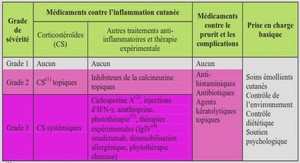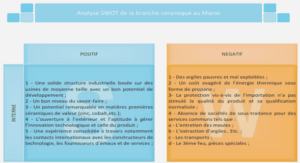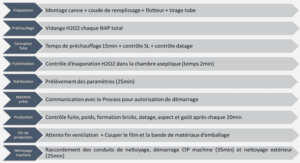Professional certifications
Professional certifications have been an important part of the computing industry for many years and will continue to become more important. Many reasons exist for these certifications, but the most popularly cited reason is that of credibility. All other considerations held equal, the certified employee/consultant/job candidate is considered more valuable than one who is not. Goals and Methods The most important and somewhat obvious goal of this book is to help you pass the ISCW exam (642-825). In fact, if the primary objective of this book were different, the book’s title would be misleading; however, the methods used in this book to help you pass the CCNP ISCW exam are designed to also make you much more knowledgeable about how to do your job. Although this book and the accompanying CD-ROM together provide more than enough questions to help you prepare for the actual exam, the method in which they are used is not to simply make you memorize as many questions and answers as you possibly can. One key methodology used in this book is to help you discover the exam topics that you need to review in more depth, to help you fully understand and remember those details, and to help you prove to yourself that you have retained your knowledge of those topics. So this book helps you pass the exam not by memorization, but by truly learning and understanding the topics. Although the ISCW exam is just one of the foundation areas for the CCNP certification, you should not consider yourself a truly skilled routing and switching engineer or specialist until you have demonstrated that you understand the material covered on the exam. This book would do you a disservice if it did not attempt to help you learn the material. To that end, the book uses the following methods to help you pass the ISCW exam: ■ Helps you discover which test topics you have not mastered ■ Provides explanations and information to fill in your knowledge gaps ■ Supplies exercises and scenarios that enhance your ability to recall and deduce the answers to test questions ■ Provides practice exercises on the topics and the testing process via test questions on the CDRO.
Strategies for Exam Preparation
The strategy you use to prepare for the CCNP ISCW exam might be slightly different from strategies used by other readers, mainly based on the skills, knowledge, and experience you already have obtained. For instance, if you have attended the ISCW course, you might take a different approach from that taken by someone who has learned switching via on-the-job training. The section “How to Use This Book to Pass the Exam,” later in this introduction, includes various preparation strategies that are tailored to match differing reader backgrounds. Regardless of the strategy you use or the background you have, the book is designed to help you get to the point that you can pass the exam with the least amount of time required. For instance, there is no need for you to practice or read about IP addressing and subnetting if you fully understand it already. However, many people like to make sure that they truly know a topic and thus read over material that they already know. Several book features help you gain the confidence that you know some material already and also help you know what topics you need to study more. Although this book can be read cover to cover, it is designed to be flexible and allow you to easily move between chapters and sections of chapters to cover just the material that you need more work with. If you intend to read all chapters, the order in the book is an excellent sequence to use. The chapters cover the following topics: ■ Chapter 1, “Describing Network Requirements”—This chapter describes the basic framework for network evolution using the Service-Oriented Network Architecture (SONA) framework to build an Intelligent Information Network (IIN). ■ Chapter 2, “Topologies for Teleworker Connectivity”—This chapter describes connectivity and security requirements for teleworker access to a central site. 150x01x.book Page xxiv Monday, June 18, 2007 8:52 AM xxv ■ Chapter 3, “Using Cable to Access a Central Site”—This chapter describes cable access and the underlying technologies that make it a viable connectivity option for SOHO and teleworkers. ■ Chapter 4, “Using DSL to Access a Central Site”—This chapter describes DSL access and the underlying technologies that make it a viable connectivity option for SOHO and teleworkers. ■ Chapter 5, “Configuring DSL Access with PPPoE”—This chapter discusses the PPPoE technology and its use in SOHO and teleworker deployments. ■ Chapter 6, “Configuring DSL Access with PPPoA”—This chapter discusses the PPPoA technology and its use in SOHO and teleworker deployments. ■ Chapter 7, “Troubleshooting DSL Access”—This chapter discusses some basic DSL troubleshooting techniques specific to DSL in a SOHO or teleworker deployment. ■ Chapter 8, “The MPLS Conceptual Model”—This chapter discusses the basic switching technologies and concepts in MPLS networks. ■ Chapter 9, “MPLS Architecture”—This chapter discusses the manner in which routing and label switching take place in an MPLS network. ■ Chapter 10, “Configuring Frame Mode MPLS”—This chapter discusses the configuration of MPLS technologies on Cisco routers. ■ Chapter 11, “MPLS VPN Technologies”—This chapter describes MPLS VPN architecture and how it improves upon traditional VPN models. ■ Chapter 12, “IPsec Overview”—This chapter describes the concepts used to secure network connections today with IPsec. The various protocols and concepts are covered. ■ Chapter 13, “Site-to-Site VPN Operations”—This chapter discusses the purpose and use of site-to-site VPNs. It shows configuration of site-to-site VPNs via both the CLI and SDM. ■ Chapter 14, “GRE Tunneling over IPsec”—This chapter discusses the use of GRE over IPsec to permit dynamic routing over VPN connections. Once again, both CLI and SDM configurations are discussed. ■ Chapter 15, “IPsec High Availability Options”—This chapter discusses how failures in a network can occur and what steps can be taken to mitigate the risks of failure. ■ Chapter 16, “Configuring Cisco Easy VPN”—This chapter examines the use of the Cisco Easy VPN solution to simplify the deployment of VPN connections to remote offices. ■ Chapter 17, “Implementing the Cisco VPN Client”—This chapter discusses the installation, configuration, and use of the Cisco VPN Client for individual VPN connections. ■ Chapter 18, “Cisco Device Hardening”—This chapter discusses the various vulnerabilities that exist in network devices and explains steps to secure the devices from compromise.





